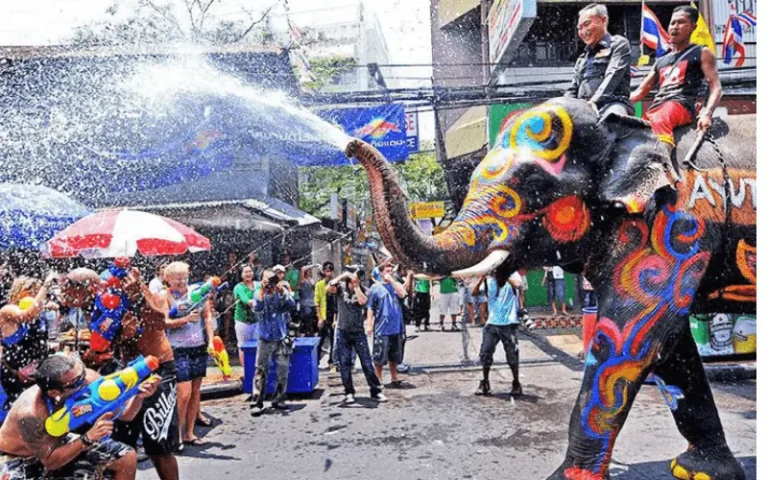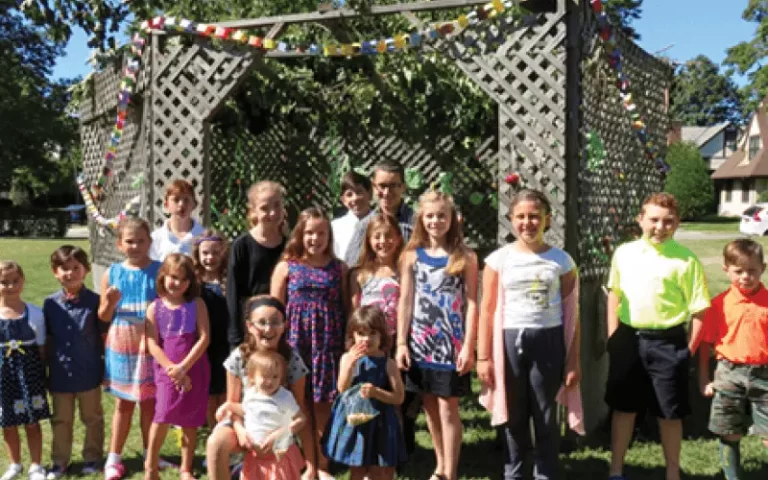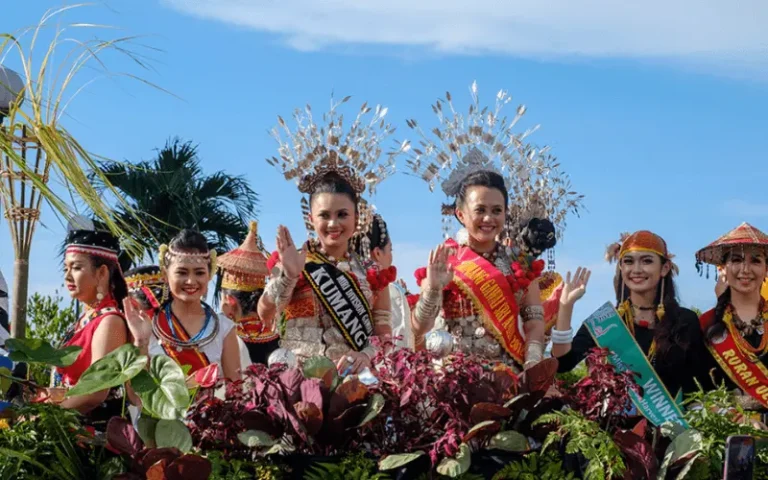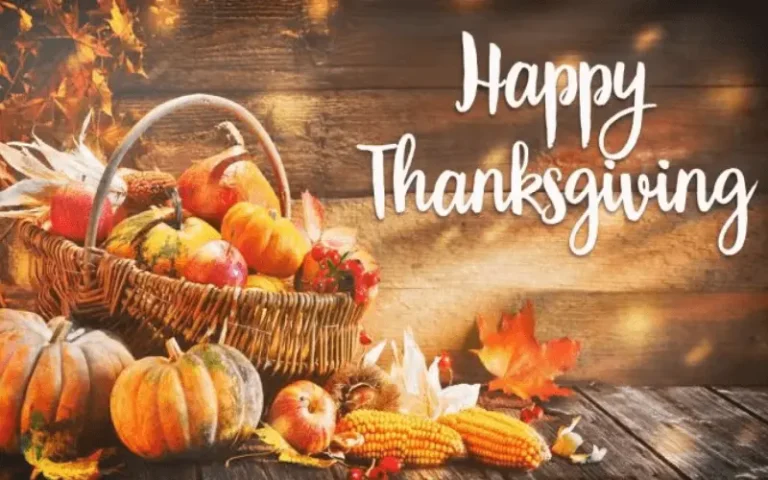Chuseok Festival|How Do Koreans Celebrate Thanksgiving?
The fall of a harvest means a lot to us as we eat different healthy crops and fruits just because of it. This is why South Korea has a festival known as the Chuseok Festival. This festival celebrates the fall of the harvest and thanks to the labor, the beautiful crops, and the fruits we get because of harvesting. When do Koreans celebrate this day, what’s its history, and when will it be celebrated in 2024? I’ll be telling you all about that in this article.
Stay around
What is Chuseok (Hangawi)?
Chuseok (추석) is a traditional Korean harvest festival celebrated across South Korea on the 15 days of the 8th Month of the lunar calendar, typically September. This festival is quite similar to the Mid-Autumn Festival (Moon Festival), the Chinese traditional festival, as it also celebrates the fall of harvest and thanks to the crops, fruits, and the laborers who worked hard to harvest them.
On Chuseok, also known as Hangawi (한가위) or Korean Thanksgiving people honor their loved ones by visiting their hometown and spending quality time with them. Other than that, this day is a kind of day of the dead and honors the deceased ancestors.
What does Chuseok mean?

Chuseok, often referred to as the Korean Thanksgiving or Autumn Eve, signifies a significant harvest festival in Korea. The term “Chuseok” itself translates to “Autumn Eve,” reflecting its observance during the autumn season. This celebration holds cultural importance, highlighting gratitude for the harvest, honoring ancestors, and fostering family connections through reunions and traditional customs.
How do you say “Happy Chuseok” in Korean?
During Korean Thanksgiving, a common greeting is “추석 잘 보내세요 (chuseok jal boneset),” meaning “Have a good Chuseok.” It’s akin to saying “Happy Thanksgiving” in English. Additionally, you can say “즐거운 한가위 되세요 (jeulgeoun hangawi doeseyo),” wishing someone a “Happy Hangawi,” or the more elaborate phrase “즐겁고 풍성한 한가위 되세요 (jeulgeopgo pungseonghan hangawi doeseyo),” conveying wishes for a “Happy and Prosperous Hangawi.”
History of Hangawi
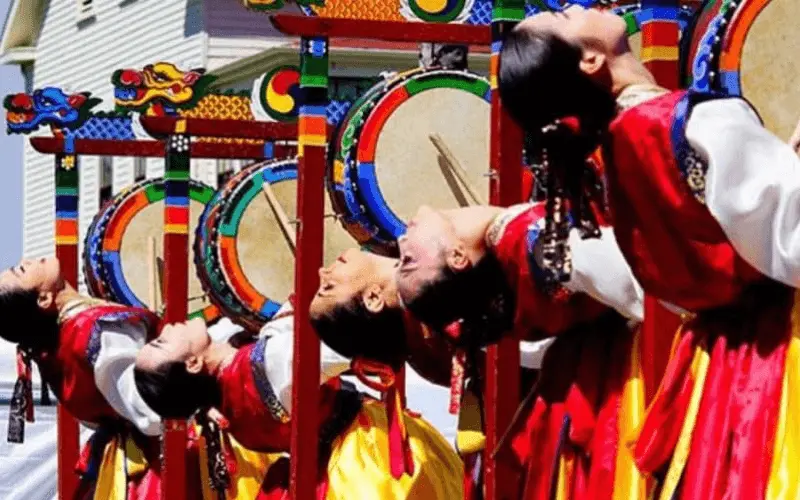
South Korean Hangawi is a special time in South Korean culture when people come together to show gratitude and celebrate. It’s been around for over 2,000 years since it started as a weaving competition that became a harvest festival. The festival occurs during the autumn equinox, and families across the country join together to give thanks for the year’s bountiful harvest.
Hangawi is a time to cherish family, honor ancestors, and share delicious meals. It shows Koreans’ deep connection with their agricultural heritage and values of unity, family, and appreciation for nature’s abundance. South Korea Thanksgiving is a beautiful reminder to reflect on life’s blessings and strengthen family bonds.
How do Koreans celebrate this day? Let’s talk about that now.
How do Koreans celebrate the Korean Thanksgiving?
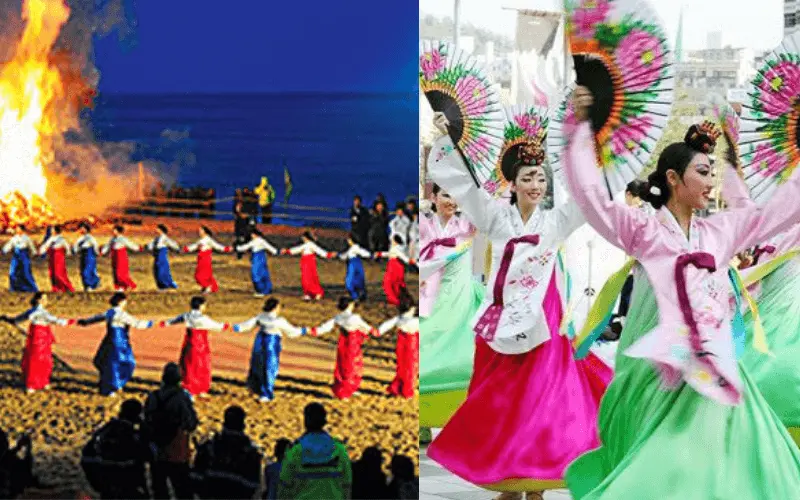
Korean people celebrate the Hangawi festival in the following way.
Regional and Cultural Variations In the Korean Thanksgiving
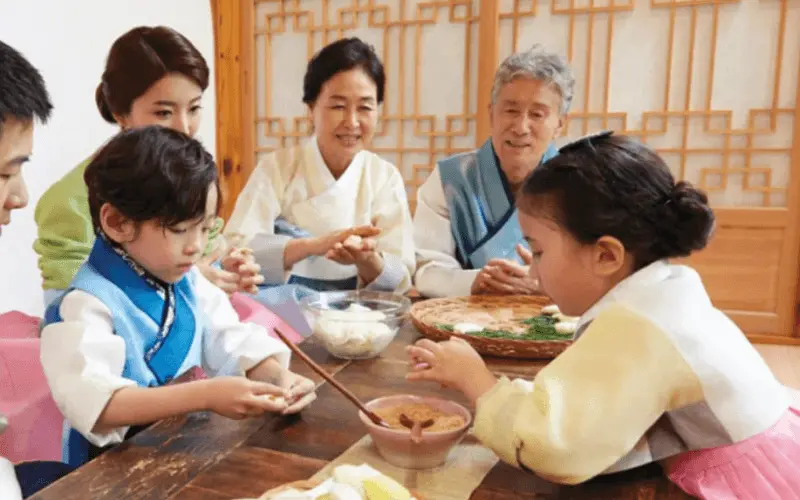
While the festival is celebrated across South Korea, different regions have unique customs and traditions.
For example, in the Gangwon Province, people play a game called ‘Ganggangsullae,’ where women in bright traditional costumes dance in a circle under the moonlight. On Jeju Island, people celebrate Chuseok by making a special rice cake called ‘Jeonbyeong’ and performing traditional folk songs. It’s amazing how a single festival can have so many interpretations and variations, reflecting the diversity and richness of South Korea’s cultural heritage.
Folk games enrich the Korean Thanksgiving holidays
Dates and Scheduling of Chuseok 2024,2025,2026, 2027
| Year | Gregorian Date | Lunar Date |
|---|---|---|
| 2024 | September 29 | August 15 |
| 2025 | October 4 | August 24 |
| 2026 | September 22 | August 12 |
| 2027 | October 1 | September 8 |
Conclusion
Chuseok Day is celebrated each year on the 15th day of the 8th month of the lunar calendar, which usually is September. Korean people celebrate this day to thank the fall harvest and honor their deceased ancestors. People celebrate this day by having parties, eating traditional foods, and wearing Hanbok clothing and other Chuseok customs.
Table of Contents
| Festival Name | Chuseok (추석, 秋夕) |
|---|---|
| Also Called | Korean Thanksgiving, Hangawi |
| Observed by | South Korea, North Korea |
| Festival Type | Harvest, Cultural |
| Frequency | Annual |
| Duration | Typically spans 3 days |
| Importance | Significant holiday in Korea |
| Related Festivals | Mid-Autumn Festival (in China), Tsukimi (in Japan) |
| Cultural Significance | Honors ancestors, celebrate harvest, family reunions |
Frequently Asked Questions
What is the Chuseok holiday in Korea?
Chuseok in Korea, known as Korean Thanksgiving Day, is a significant harvest festival celebrated to honor ancestors and the autumn harvest. Lasting three days, it involves family reunions, paying respects at ancestral graves, traditional rituals, and sharing delicious food. It symbolizes gratitude for the year’s abundance and fosters strong family ties.
What is the Korean Chuseok event?
The Korean Chuseok event is a revered harvest festival observed in the eighth month of the lunar calendar, coinciding with the fullest moon of the year. Known as Korean Thanksgiving.




